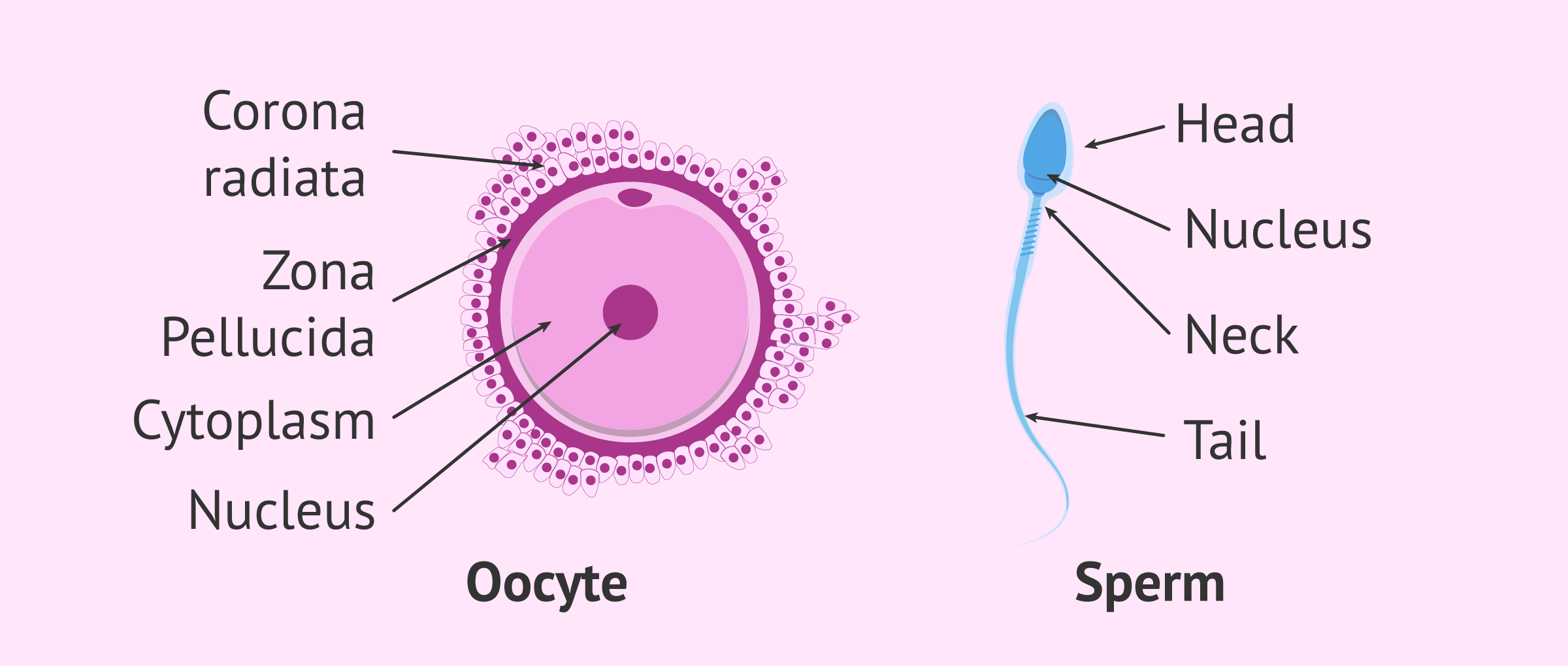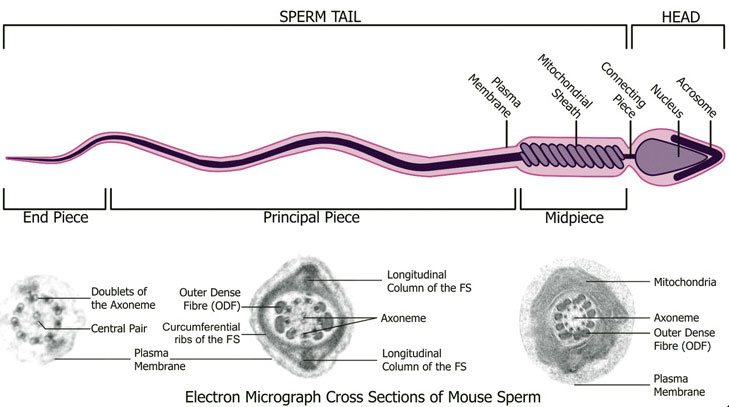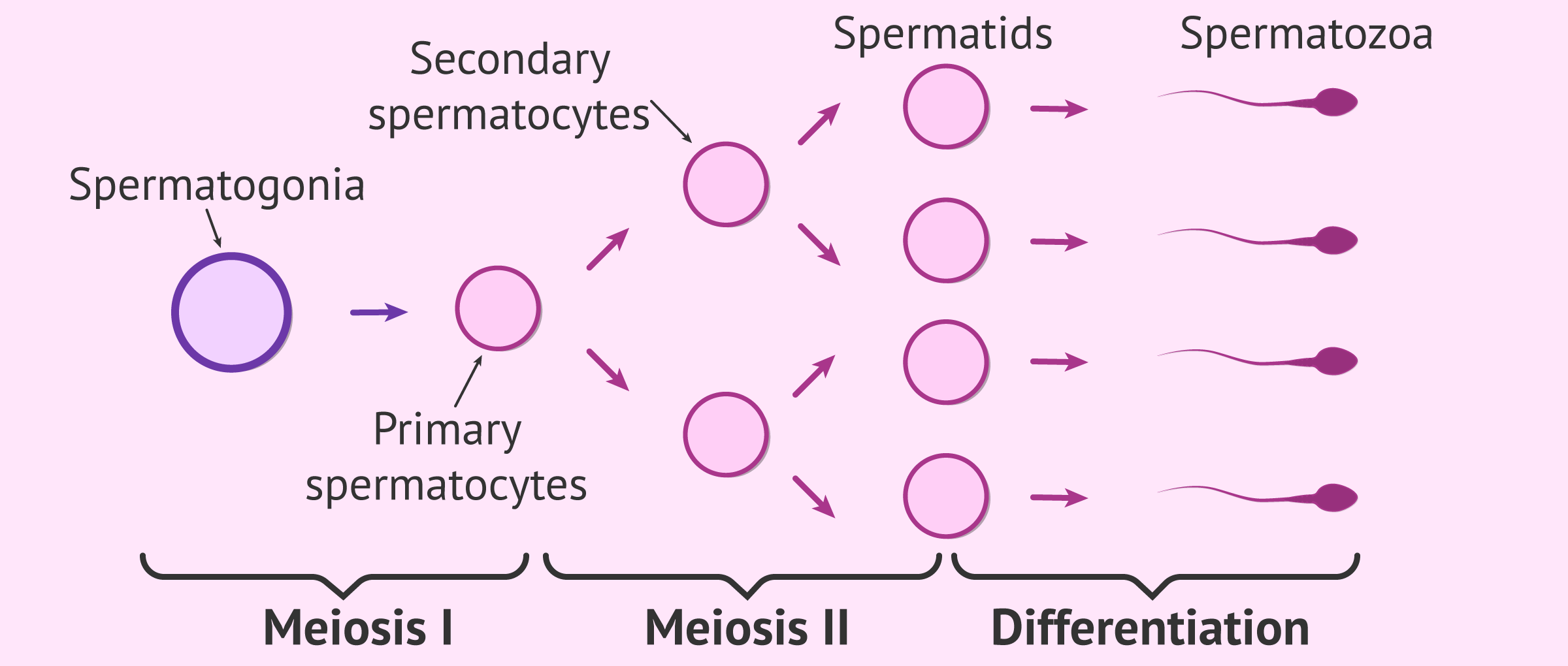
Gametes: The Fundamental Units of Sexual Reproduction
Gametes are specialized reproductive cells that play a crucial role in sexual reproduction. They are haploid cells, meaning they contain a single set of chromosomes, which is half the number found in somatic (body) cells. The fusion of male and female gametes during fertilization leads to the formation of a zygote, restoring the diploid chromosome number and giving rise to a new organism. This article delves into the types of gametes, their formation processes, structure, and significance in the reproductive biology of various organisms.

Types of Gametes
There are two primary types of gametes:
- Spermatozoa (Sperm)
- Ova (Eggs)
Spermatozoa (Sperm)
- Origin: Sperm are the male gametes, produced in the testes of males.
- Structure: Sperm are typically small, motile cells consisting of a head, midpiece, and tail (flagellum). The head contains a condensed nucleus with DNA and an acrosome, which contains enzymes to penetrate the egg. The midpiece is packed with mitochondria to provide energy for motility, and the tail propels the sperm towards the egg.
- Function: The primary function of sperm is to deliver the paternal genetic material to the egg during fertilization.

Ova (Eggs)
- Origin: Ova are the female gametes, produced in the ovaries of females.
- Structure: Eggs are larger, non-motile cells containing cytoplasm, a nucleus, and various organelles. The egg's cytoplasm provides the necessary nutrients and organelles to support the early stages of embryo development.
- Function: The egg's primary function is to provide the maternal genetic material and the initial cellular environment for the developing embryo.
Gametogenesis: The Formation of Gametes
Gametogenesis is the process by which gametes are formed through meiosis, a specialized type of cell division that reduces the chromosome number by half. There are two main types of gametogenesis: spermatogenesis and oogenesis.
Spermatogenesis
- Location: Occurs in the seminiferous tubules of the testes.
- Process: Spermatogenesis involves several stages:
- Spermatogonia: Diploid stem cells that undergo mitosis to produce primary spermatocytes.
- Primary Spermatocytes: These cells undergo the first meiotic division to form two secondary spermatocytes.
- Secondary Spermatocytes: These cells undergo the second meiotic division to produce four haploid spermatids.
- Spermiogenesis: Spermatids undergo morphological changes to become mature spermatozoa (sperm).

Oogenesis
- Location: Occurs in the ovaries.
- Process: Oogenesis involves several stages:
- Oogonia: Diploid stem cells that undergo mitosis to produce primary oocytes.
- Primary Oocytes: These cells begin meiosis but are arrested in prophase I until puberty.
- Secondary Oocytes: At puberty, primary oocytes complete the first meiotic division to form a secondary oocyte and a polar body. The secondary oocyte begins the second meiotic division but is arrested in metaphase II until fertilization.
- Ovulation: The secondary oocyte is released from the ovary during ovulation. If fertilization occurs, it completes meiosis II to form a mature ovum and another polar body.

Role of Gametes in Fertilization
Fertilization is the process by which a sperm cell and an egg cell unite to form a zygote, initiating the development of a new organism.
- Recognition and Binding: Sperm must recognize and bind to the zona pellucida, a glycoprotein layer surrounding the egg. This recognition is species-specific and ensures that sperm and egg from the same species fuse.
- Acrosome Reaction: Upon binding, the sperm undergoes the acrosome reaction, releasing enzymes that digest the zona pellucida, allowing the sperm to penetrate the egg.
- Fusion: The sperm and egg plasma membranes fuse, and the sperm nucleus is incorporated into the egg cytoplasm.
- Activation of Egg: The egg is activated, completing meiosis II and forming a mature ovum. The sperm and egg nuclei then combine to form a diploid zygote.

Genetic Diversity
One of the key advantages of sexual reproduction involving gametes is the generation of genetic diversity. This diversity arises from:
- Independent Assortment: During meiosis, homologous chromosomes are randomly distributed to daughter cells, resulting in a unique combination of chromosomes in each gamete.
- Crossing Over: Homologous chromosomes exchange genetic material during prophase I of meiosis, creating new genetic combinations.
- Fertilization: The random fusion of male and female gametes further increases genetic variation among offspring.

Gametes in Different Organisms
While the fundamental principles of gametogenesis and fertilization are conserved across species, there are variations in how different organisms produce and utilize gametes.
Plants
- Pollen Grains: Male gametes are contained within pollen grains, which are produced in the anthers of flowers.
- Ovules: Female gametes are contained within ovules, which are produced in the ovaries of flowers.
- Double Fertilization: In flowering plants, one sperm fertilizes the egg to form the zygote, while another sperm fuses with two polar nuclei to form the endosperm, providing nourishment to the developing embryo.
Animals
- External Fertilization: Many aquatic animals release their gametes into the water, where fertilization occurs externally.
- Internal Fertilization: Terrestrial animals often use internal fertilization, where sperm is deposited inside the female reproductive tract.
Gamete FAQ
Gametes, which are sperm and egg cells in animals (or pollen and ovules in plants), differ from somatic cells in both genetic content and function:
-
Genetic Content: Gametes are haploid cells, meaning they contain a single set of chromosomes (n). This is in contrast to somatic cells, which are diploid and have two sets of chromosomes (2n). The haploid nature of gametes ensures that when they fuse during fertilization, the resulting zygote has the correct diploid number of chromosomes.
-
Function: The primary function of gametes is to carry genetic information from each parent and combine it during fertilization to form a new organism. Somatic cells, on the other hand, make up the body's tissues and organs and are involved in growth, repair, and normal cellular functions.
The formation of gametes is regulated by a complex series of molecular mechanisms during meiosis:
-
Meiosis-specific Proteins: Proteins such as SPO11 initiate recombination by causing double-strand breaks in DNA, which are essential for homologous recombination.
-
Synaptonemal Complex: This protein structure forms between homologous chromosomes during prophase I of meiosis, facilitating their pairing, synapsis, and recombination.
-
Cohesins and Separase: Cohesin proteins hold sister chromatids together, and separase cleaves cohesin to allow chromatid separation during anaphase.
-
Checkpoint Mechanisms: Multiple checkpoints ensure that cells do not progress through meiosis until all processes, such as DNA replication and repair, chromosome pairing, and segregation, are correctly completed. These include the spindle assembly checkpoint, which ensures chromosomes are properly attached to the spindle fibers before segregation.
Genetic recombination during gametogenesis occurs primarily through crossing over and independent assortment:
-
Crossing Over: During prophase I of meiosis, homologous chromosomes exchange genetic material at chiasmata, the physical points of crossover. This process creates new combinations of alleles on each chromosome, contributing to genetic variation in the gametes.
-
Independent Assortment: During metaphase I of meiosis, homologous chromosome pairs align randomly at the cell's equatorial plane. This random orientation results in the independent segregation of maternal and paternal chromosomes into gametes, further increasing genetic diversity.
The combination of these mechanisms ensures that each gamete carries a unique set of genetic information, which contributes to the genetic variation observed in offspring.
Gametogenesis differs significantly between males (spermatogenesis) and females (oogenesis):
-
Timing: Spermatogenesis begins at puberty and continues throughout life, producing millions of sperm daily. Oogenesis begins during fetal development, with primary oocytes arrested in prophase I until puberty. After puberty, oocytes periodically resume meiosis, typically one per menstrual cycle.
-
Yield: Spermatogenesis produces four viable sperm cells from each spermatogonial cell, whereas oogenesis results in one viable egg and three polar bodies (which usually degenerate) from each oogonial cell.
-
Duration: Spermatogenesis takes about 64-72 days to complete. In contrast, oogenesis can take many years, as oocytes remain arrested in prophase I for decades until they resume meiosis during ovulation.
Environmental factors can significantly influence gametogenesis and gamete quality:
-
Temperature: In many species, including humans, temperature can affect spermatogenesis. For instance, elevated scrotal temperatures can impair sperm production and function.
-
Nutrition: Adequate nutrition is essential for proper gametogenesis. Deficiencies in vitamins and minerals, such as folic acid, zinc, and vitamin E, can negatively impact gamete quality.
-
Toxins and Chemicals: Exposure to environmental toxins, such as pesticides, heavy metals, and endocrine disruptors, can adversely affect gametogenesis. For example, certain chemicals can cause DNA damage in gametes or disrupt hormonal regulation of reproductive processes.
-
Radiation: Exposure to ionizing radiation can cause genetic mutations in gametes, leading to reduced fertility or genetic disorders in offspring.
-
Stress: Chronic stress can disrupt hormonal balance and impair gametogenesis, reducing fertility and gamete quality.
Understanding these factors is crucial for improving reproductive health and addressing issues related to infertility and environmental impacts on reproduction.
Conclusion
Gametes are fundamental to the process of sexual reproduction, ensuring the continuation of species and contributing to genetic diversity. Understanding the biology of gametes, from their formation through gametogenesis to their role in fertilization, provides crucial insights into the mechanisms underlying reproduction and heredity. The study of gametes continues to be a vital area of research with implications for fields ranging from developmental biology to reproductive medicine.
You can check out this book on gametes https://www.sciencedirect.com/referencework/9780080961569/brenners-encyclopedia-of-genetics
Also, read this article on Gamete Activation https://www.ncbi.nlm.nih.gov/pmc/articles/PMC4917743/





